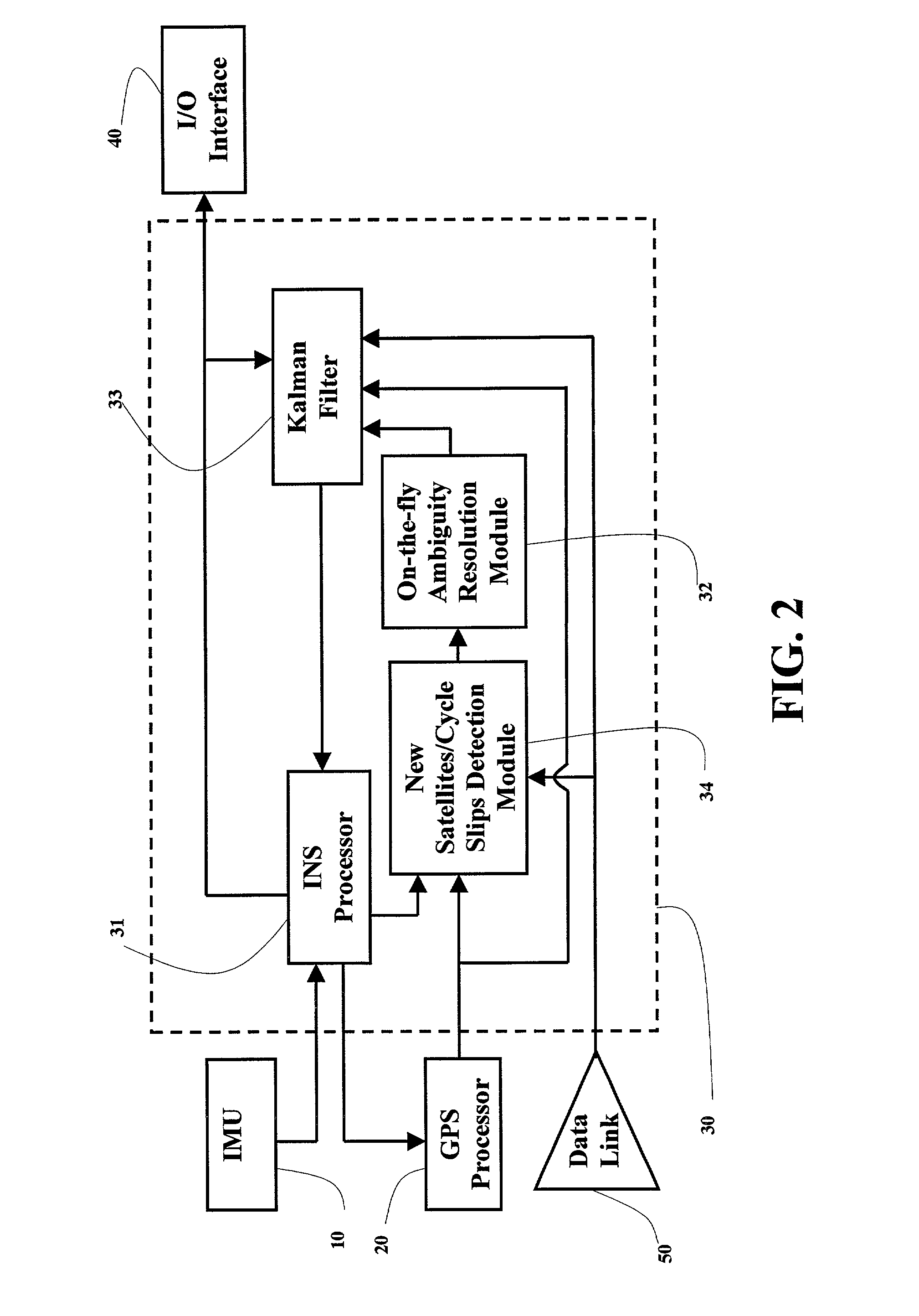Fully-coupled vehicle positioning method and system thereof
a fully-coupled vehicle and positioning method technology, applied in wave based measurement systems, instruments, navigation instruments, etc., can solve the problems of range error (ure), affecting pseudorange measurement and phase measurement, and both measurements are measurement errors, so as to improve the accuracy of receiver position and velocity, improve the performance of gps/ins, and accurately determine the receiver position and velocity
- Summary
- Abstract
- Description
- Claims
- Application Information
AI Technical Summary
Benefits of technology
Problems solved by technology
Method used
Image
Examples
Embodiment Construction
[0042] The improved fully-coupled GPS / IMU vehicle positioning system with differential GPS of the present invention, as shown in FIG. 1, comprises an IMU (inertial measurement unit) 10 and a GPS (global positioning system) processor 20 which are connected to a central navigation processor 30. The navigation solution is output to an I / O (input / output) interface 40. To perform differential GPS, a data link 50, which is also connected to the central navigation processor 30, is used to receive the position, velocity, and raw measurements (pseudorange and phase) from the reference site. The central navigation processor 30 is responsible for all data processing tasks.
[0043] Referring to FIG. 1 and FIG. 2, the improved fully-coupled global positioning system / inertial measurement unit (GPS / IMU) vehicle positioning process with differential GPS of the present invention comprises the following steps.
[0044] a) Receive GPS rover measurements (including pseudorange, carrier phase, and Doppler sh...
PUM
 Login to View More
Login to View More Abstract
Description
Claims
Application Information
 Login to View More
Login to View More - R&D
- Intellectual Property
- Life Sciences
- Materials
- Tech Scout
- Unparalleled Data Quality
- Higher Quality Content
- 60% Fewer Hallucinations
Browse by: Latest US Patents, China's latest patents, Technical Efficacy Thesaurus, Application Domain, Technology Topic, Popular Technical Reports.
© 2025 PatSnap. All rights reserved.Legal|Privacy policy|Modern Slavery Act Transparency Statement|Sitemap|About US| Contact US: help@patsnap.com



